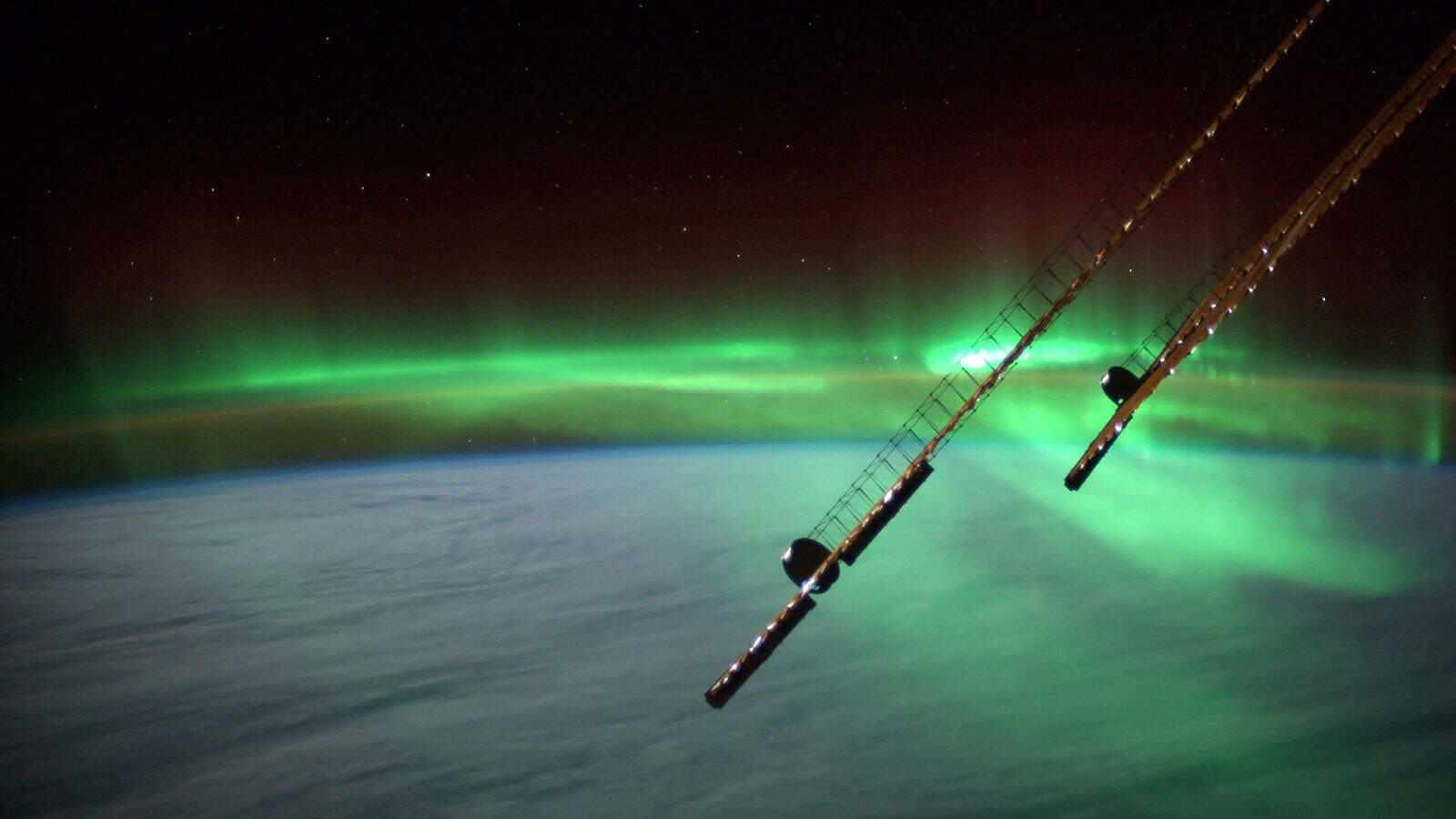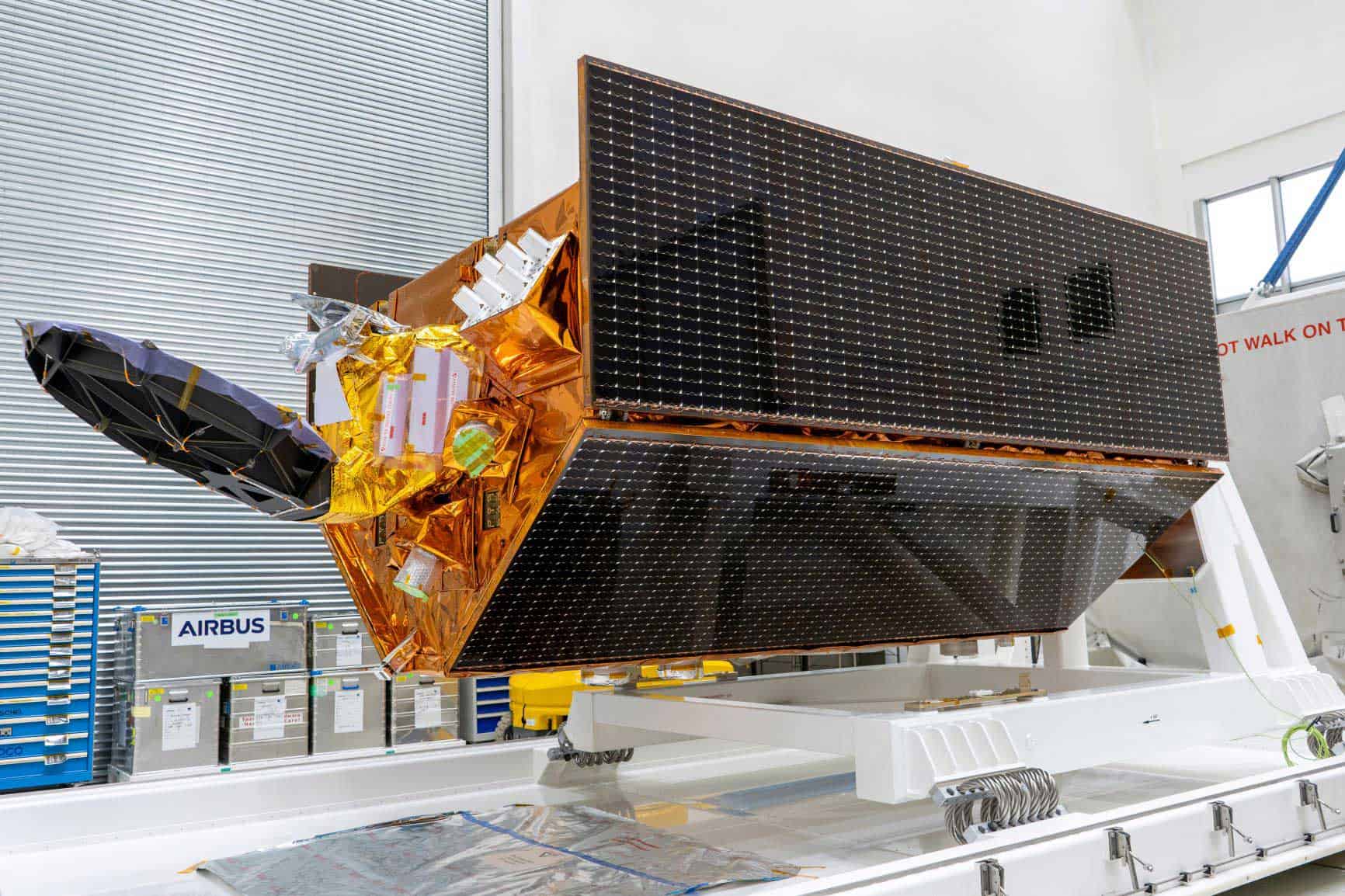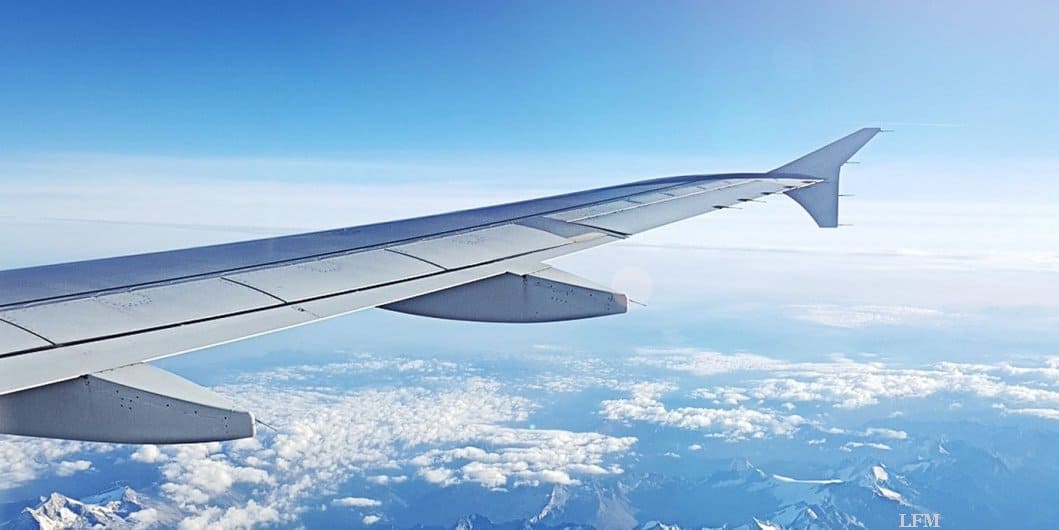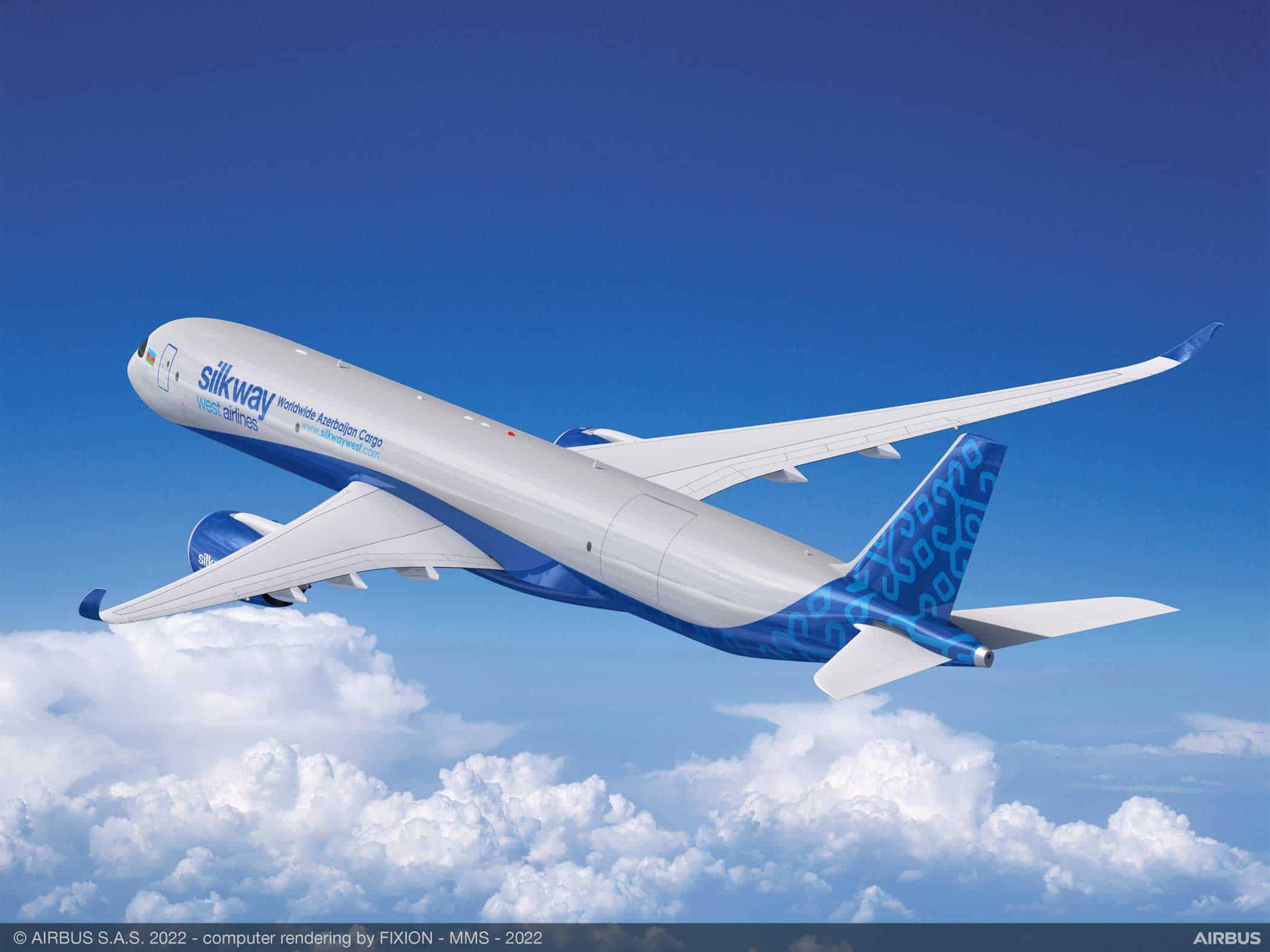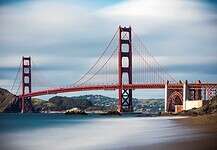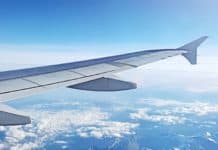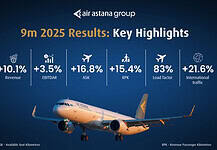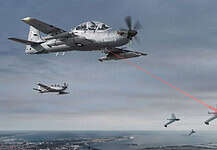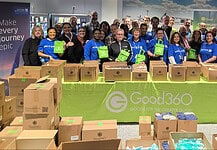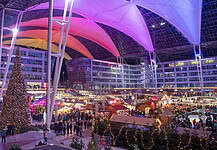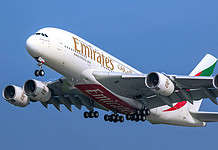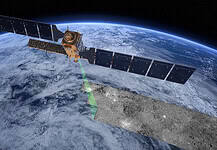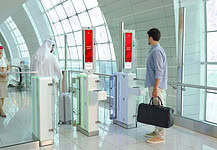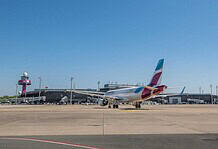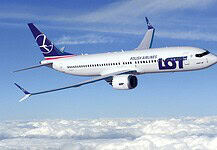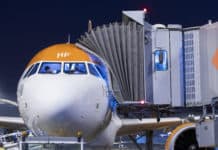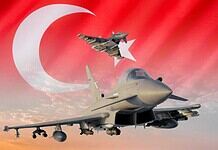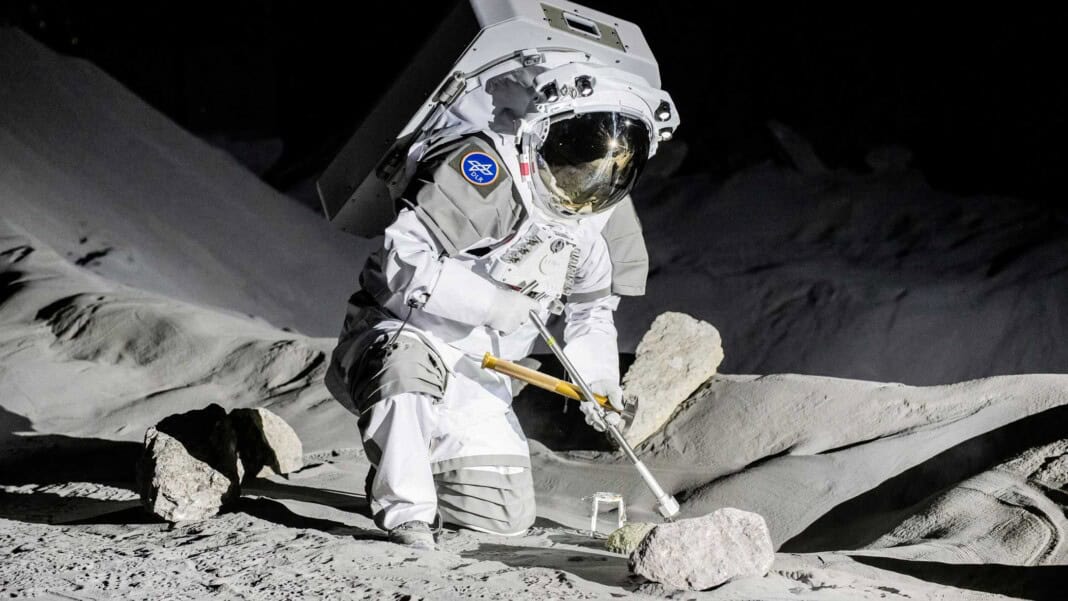
This site is also available on:
Deutsch
The German Aerospace Center (DLR) is exploring new horizons with the SpaceTech.NRW conference in collaboration with the NRW state government and ESA. The goal is to strengthen North Rhine-Westphalia as an aerospace hub and expand the space ecosystem with SPACEHUB COLOGNE, specifically through the GovSatCom initiative.
Space research with social benefits
The DLR is intensively involved in space research and development through more than 20 institutes that test innovative technologies and provide socially relevant insights. The upcoming SpaceTech.NRW event on April 30, 2025, aims to establish North Rhine-Westphalia as a leading location for aerospace and space travel and to strengthen synergies between science, industry, and politics.
SPACEHUB COLOGNE: A potential carrier
Professor Dr.-Ing. Anke Kaysser-Pyzalla emphasizes the importance of the DLR site in Cologne, which plays a leading role in Germany‘s space sector thanks to strong partners such as the German Air Force and ESA. The COLOGNE SPACEHUB is to be modernized and expanded with new research infrastructure to further advance European independence. The GovSatCom Hub – an initiative aimed at creating a highly secure communications infrastructure – also serves this goal.
GovSatCom Hub and European autonomy
The EU Commission’s decision to establish a GovSatCom Hub in Cologne marks an important step toward Europe’s autonomy in security-critical applications. This project, implemented in partnership with the federal government, the state of North Rhine-Westphalia, DLR, and Cologne/Bonn Airport, aims to ensure resilient and uninterrupted communications for authorities, civil protection agencies, and other public institutions, even in crisis situations.
DLR Campus: Opportunities for companies and start-ups
The new DLR campus, in conjunction with Cologne/Bonn Airport, is seen as an ideal development environment for companies and start-ups. Professor Kaysser-Pyzalla emphasizes the importance of attracting companies to the site, particularly the integration of small and medium-sized enterprises (SMEs) that collaborate with the industrial and technological infrastructure of the airport, the Air Force, and ESA.
The German Aerospace Center (DLR) is a key player in the field of aerospace research and, with its institutes and collaborative projects, offers a platform for innovative developments. The Cologne/Bonn vision offers European autonomy through state-of-the-art research facilities and pioneering infrastructure.
NRW is shaping the new space age
North Rhine-Westphalia (NRW) will play a central role in the age of space travel, as leading politicians emphasize. With its outstanding infrastructure and technologies, NRW is predestined for both research and economic development. These developments could significantly strengthen European sovereignty and security in space travel.
Strategic importance of NRW in space travel
Minister-President Hendrik Wüst stated that the path to space leads through North Rhine-Westphalia, as the state is home to the European Space Agency and the German Aerospace Center, where the European Astronaut Corps trains. He explained that North Rhine-Westphalia has optimal conditions for driving space travel and exploiting the enormous economic opportunities offered by space. Wüst emphasized the importance of raising the visibility of key domestic technologies and their potential and expanding the state’s technological strengths.
Artificial intelligence as a key technology
According to Wüst, modern space travel is hardly imaginable without artificial intelligence (AI). NRW, as a strong AI location, plays a key role in this, be it in satellite planning, image analysis, or maintenance systems. Thanks to its advanced AI research and its industrialization, NRW offers ideal conditions for space projects. Wüst emphasized that the state’s transformation path from coal technology to AI will also impact space travel.
Economic potential and jobs
Mona Neubaur, Deputy Minister-President, pointed out that space travel has long been a reality and not science fiction. She mentioned the essential role of satellite communications in crisis management and climate research and emphasized the opportunities that space travel offers for North Rhine-Westphalia. New technologies and applications could create high-quality jobs, open up new markets, and provide economic stimulus for a competitive and sustainable economy.
Development of the SPACEHUB COLOGNE
Thilo Schmid, CEO of Cologne Bonn Airport, emphasized the importance of the new GovSatCom Hub on the Cologne Bonn Airport site. This development underscores the growing importance of the location as a center of excellence for aerospace. With the SPACEHUB COLOGNE, Schmid and his partners aim to promote the regional economy and create sustainable added value. New jobs, infrastructure, and synergies with research institutions are intended to strengthen the location.
The government and leading players in North Rhine-Westphalia are determined to further consolidate the state as a leading player in European space. With comprehensive expertise and a strategic focus, they are opening up new opportunities and markets to ensure long-term innovation and security.
NRW strong in space travel and research
A recent event in Cologne highlighted North Rhine-Westphalia’s significant role in space travel. The state contributes significantly to global space development through significant research contributions and numerous specialized companies. Experts discussed current developments and future challenges.
Space infrastructure in NRW
Dr. Walther Pelzer, member of the DLR Executive Board, emphasized the central importance of North Rhine-Westphalia for space infrastructure in Germany and beyond. He pointed out that many milestones could not be achieved without regional expertise. He particularly highlighted the Cologne-Porz site as a center of global excellence, which houses both the DLR and the European Astronaut Centre. Furthermore, the Alpha Magnetic Spectrometer, the largest research instrument on the International Space Station (ISS), comes from Aachen. NRW also contributes to European space security with the Space Situational Awareness Center in Uedem and makes an important contribution to climate protection through the European Centre for Medium-Range Weather Forecasts in Bonn.
Strengths of the aerospace industry
Dr. Josef Aschbacher, Director General of ESA, commented on North Rhine-Westphalia’s established role as a major center of the aerospace industry in Germany. With over 50,000 employees in 400 companies, including approximately 130 specialized space companies and research institutions, the region sets standards. The appointment of a new Space Ambassador underscores the region’s commitment to innovation and competitiveness. ESA plans to further expand its collaboration with DLR and other stakeholders to promote the region’s strengths and increase its global influence.
The new space ambassador
Reinhold Ewald, astronaut and president of the German Astronaut Association (ASE), was introduced as the new North Rhine-Westphalia (NRW) Space Ambassador. Ewald, who was born in Mönchengladbach and began his career at DLR, sees a great need for cooperation and self-sufficiency in today’s space industry. As a conference participant, he emphasized the necessity of regional participation in global space developments. His vision encompasses both the experiences gained from his work on the MIR space station and his academic activities in Stuttgart.
First SpaceTech.NRW Conference
The opening event of SpaceTech.NRW took place on the DLR site in Cologne, where around 300 experts from science, industry, and aerospace gathered. In presentations, workshops, and exhibitions, participants showcased the diversity and innovations from North Rhine-Westphalia. The conference provided a platform for the exchange of ideas and levers for continuous improvement and cooperation in space technology.
The German Aerospace Center (DLR) is Germany’s leading organization for research in the field of aerospace. Through its work, DLR makes a significant contribution to scientific and technological development in national and international contexts. It relies on cooperation and the exchange of knowledge to promote innovation and address global challenges.
Examples from DLR research in Cologne
| Retinal Diagnostics | Spaceflights lead to changes in the eyes of most astronauts. The cause is still unknown. The most serious change is swelling of the optic nerve head, which poses a health risk for long-duration missions. Retinal Diagnostics depicts and diagnoses the condition of the optic nerve. The condition of the optic nerve can, among other things, provide information about increased intracranial pressure. Artificial intelligence helps to record images or video clips of the human retina and optic nerve using a small lens attached to smartphones or tablets via an adapter. The diagnosis is made autonomously. The procedure is inexpensive and straightforward. It works in space travel as well as in mobile emergency diagnostics and in remote areas on Earth. |
| Bed rest studies | In weightlessness, muscles and bones deteriorate significantly, and bodily fluids shift to the upper half of the body. The entire cardiovascular system is less stressed and loses performance. These physical changes are like aging in fast-forward. Medical research in space is therefore not only important for astronauts to maintain their health and performance in space. It also creates insights and technologies for people on Earth, particularly for age-related health challenges. In the current bed rest study, participants remain in bed for 60 days. The bed is also tilted six degrees towards the head – the head is lower than the feet. At this tilt, the fluids in the body shift in almost the same way as in astronauts in space. In the bed rest studies, the DLR Institute of Aerospace Medicine, in collaboration with NASA, is researching measures to counteract these undesirable effects in space. |
| Jump plate | Anyone who can jump is physically capable: There is a direct connection between performance and jumping ability. This has also been confirmed at the DLR. A selection of standard tests measures, among other things, jumping power, jumping height, and ground contact time. The jumping platform demonstrated at SpaceTech.NRW can therefore be used to assess the extent to which people are able to work against gravity. This test is conducted before, during, and after studies – including the bed rest study – as well as during space flights. It is also a good indicator of the fitness level and performance of athletes, the elderly, and even children. Studies have shown that jumping power decreases significantly during immobilization. Today, tests for vertical jumping ability are standard not only in sports physiology and medical research in aerospace, but also in geriatric and rehabilitation medicine, as well as in pediatrics. It has been proven that there is a direct connection between age and maximum jumping power. |
| Spin-off: NUNOS | NUNOS is a spin-off from the DLR Institute of Aerospace Medicine. The startup is working with a technology originally intended for the utilization of nitrogen-containing wastewater in closed habitats. These habitats include, for example, lunar or Mars stations. The technology enables astronauts to convert urine into plant fertilizer to cultivate fresh food in greenhouses. The principle works similarly in agriculture: NUNOS has further developed the process for the biological treatment of manure and digestate, converting these residues into high-quality and more plant-available fertilizers. NUNOS relies on natural microbiological processes and does not use additives. The system consists of a fermenter with microorganisms on carrier materials and a collection tank from which the manure is continuously pumped to the fermenter. |
| LUNA | The LUNA Analog Facility in Cologne is a unique facility for preparing future astronautical and robotic lunar missions. The LUNA hall features, among other things, a 700-square-meter simulated lunar surface. It is filled with “lunar dust” that is deceptively similar to the real regolith. Stones and rocks are modeled on lunar geology, and a solar simulator recreates lunar lighting conditions. An area lowered by three meters allows for the testing of drilling techniques. Experiments with an inclined plane can be conducted in the future on an adjustable ramp. The “Gravity Offloading System” will soon replicate lunar gravity: For this purpose, trolleys and cable systems will be installed on the ceiling, allowing astronauts or rovers to move with one-sixth of their own weight, just like on the moon. The FLEXhab, a living area for astronaut missions, has been available since the beginning of April 2025. The EDEN LUNA research greenhouse will be connected as another external module. LUNA officially opened on September 25, 2024. The state of North Rhine-Westphalia is funding the joint DLR and ESA project with 25 million euros. |
| MUSC | The Microgravity User Support Center (MUSC) in Cologne is managed by the DLR Institute of Aerospace Medicine, the new DLR Institute of Frontier Materials on Earth and in Space (a merger of the two institutes of materials research), and the DLR Space Operations and Astronaut Training facility. Among other things, the MUSC supports experiments in the European Columbus laboratory on the International Space Station (ISS) and pre-tests whether the experiments are suitable for the ISS. The MUSC then handles data transfer to the researchers and forwards it to the ESA data center. The MUSC also plans missions and develops new measurement techniques. Two control centers monitor activities. The Lander Control Center is currently preparing for the upcoming MMX (Martian Moons eXploration) mission to explore the Martian moon Phobos. |

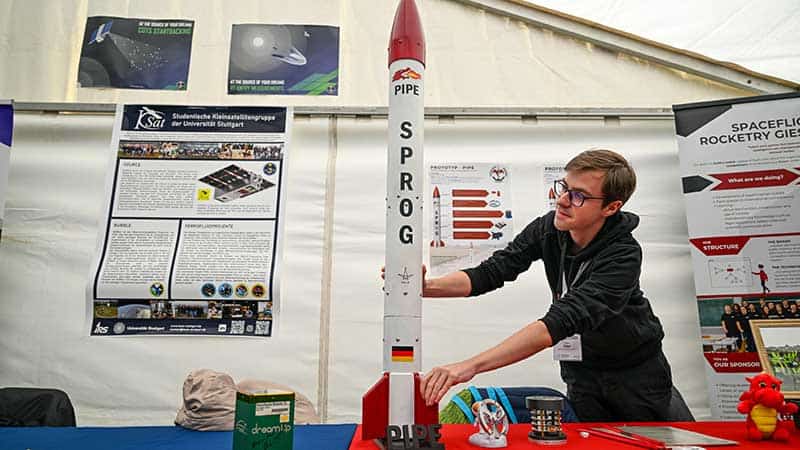 Wacken Open Air: Interstellar meeting place for space enthusiasts (Wacken Open Air: Interstellar meeting place for space enthusiasts)
Wacken Open Air: Interstellar meeting place for space enthusiasts (Wacken Open Air: Interstellar meeting place for space enthusiasts)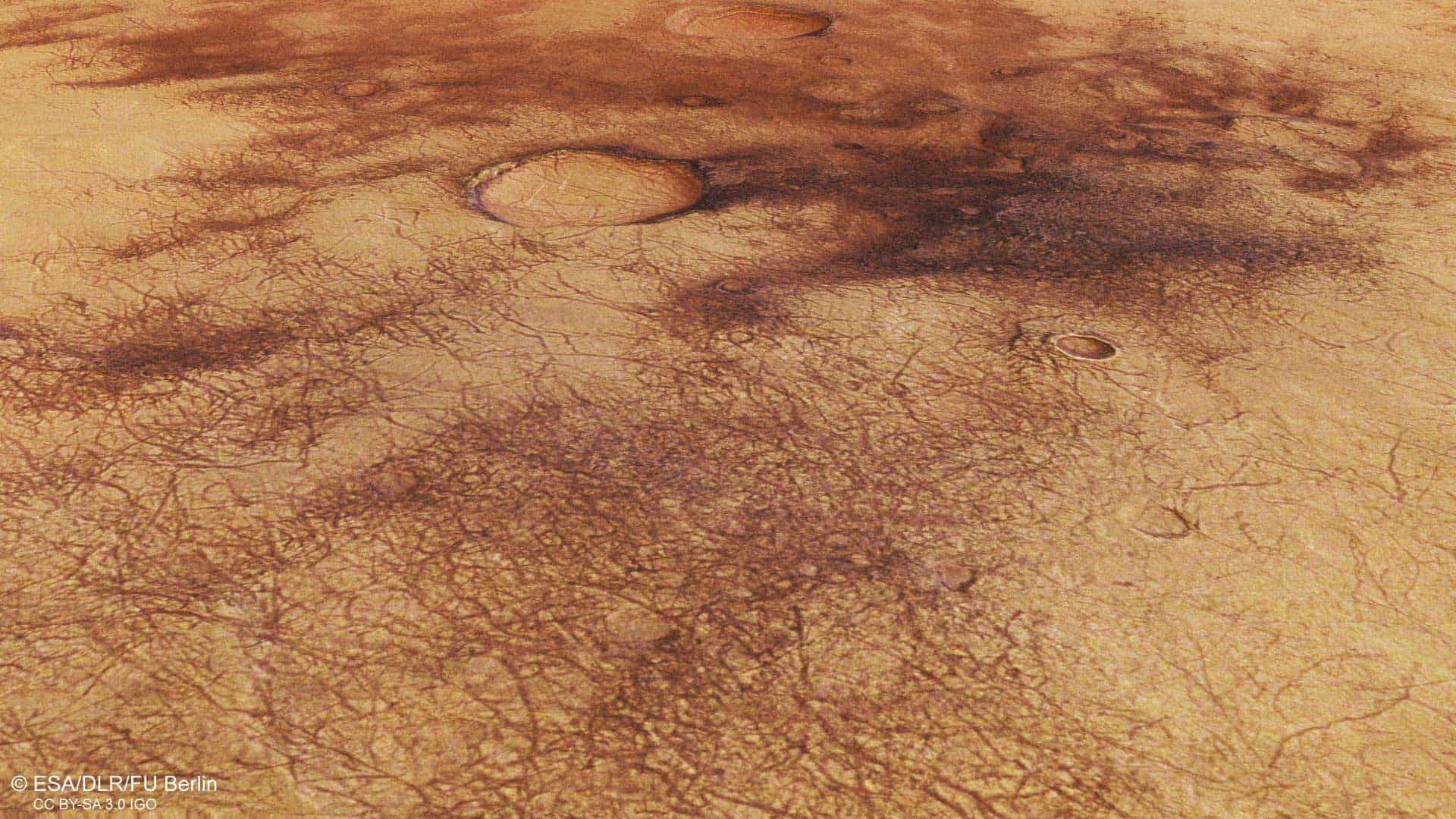 Strong Martian winds and dust devils: Insights thanks to deep learning and camera technology (Strong Martian winds and dust devils: Insights thanks to deep learning and camera technology)
Strong Martian winds and dust devils: Insights thanks to deep learning and camera technology (Strong Martian winds and dust devils: Insights thanks to deep learning and camera technology)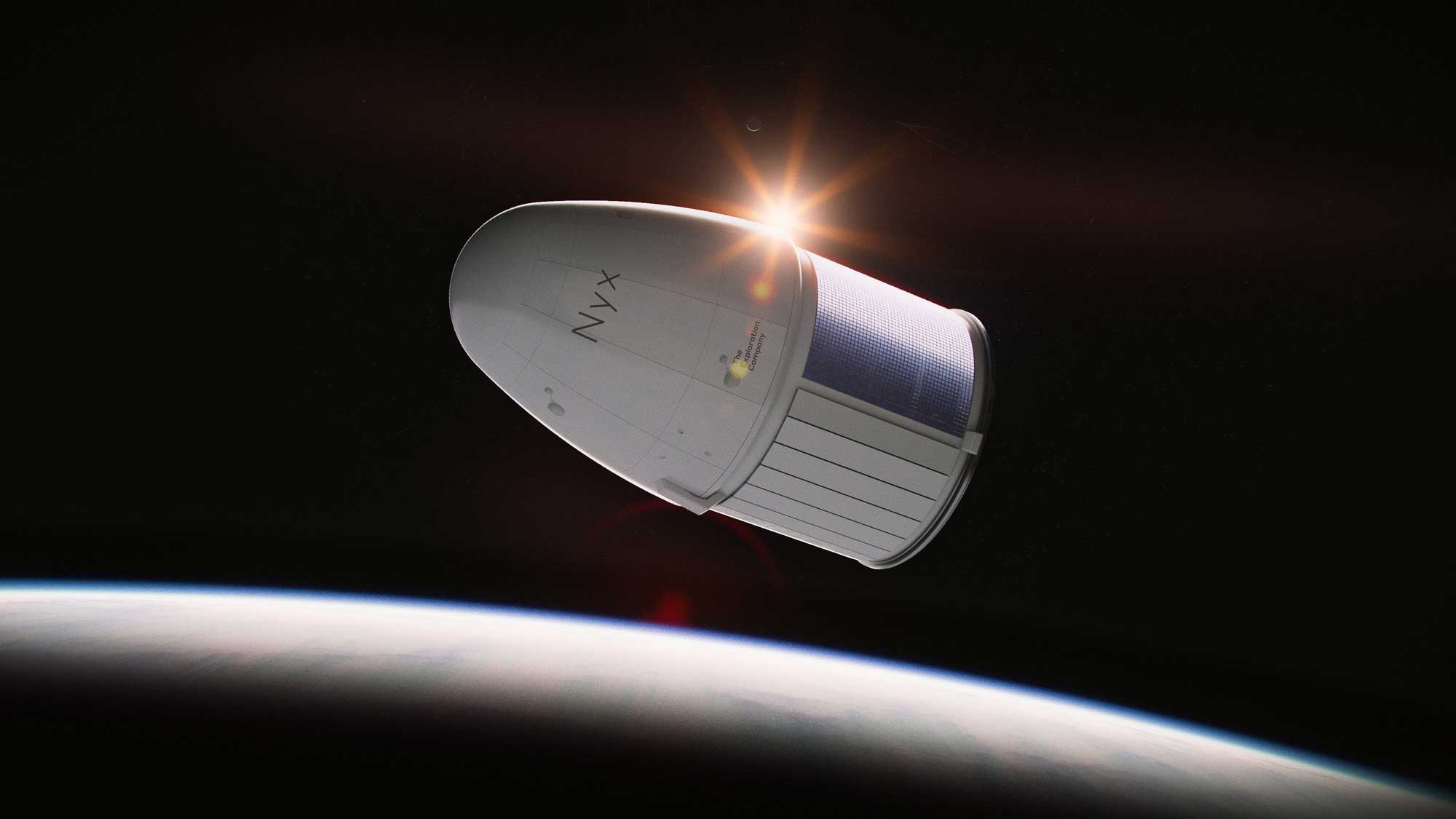 Space research: DLR buys flights on the “Nyx” space capsule (Space research: DLR buys flights on the “Nyx” space capsule)
Space research: DLR buys flights on the “Nyx” space capsule (Space research: DLR buys flights on the “Nyx” space capsule)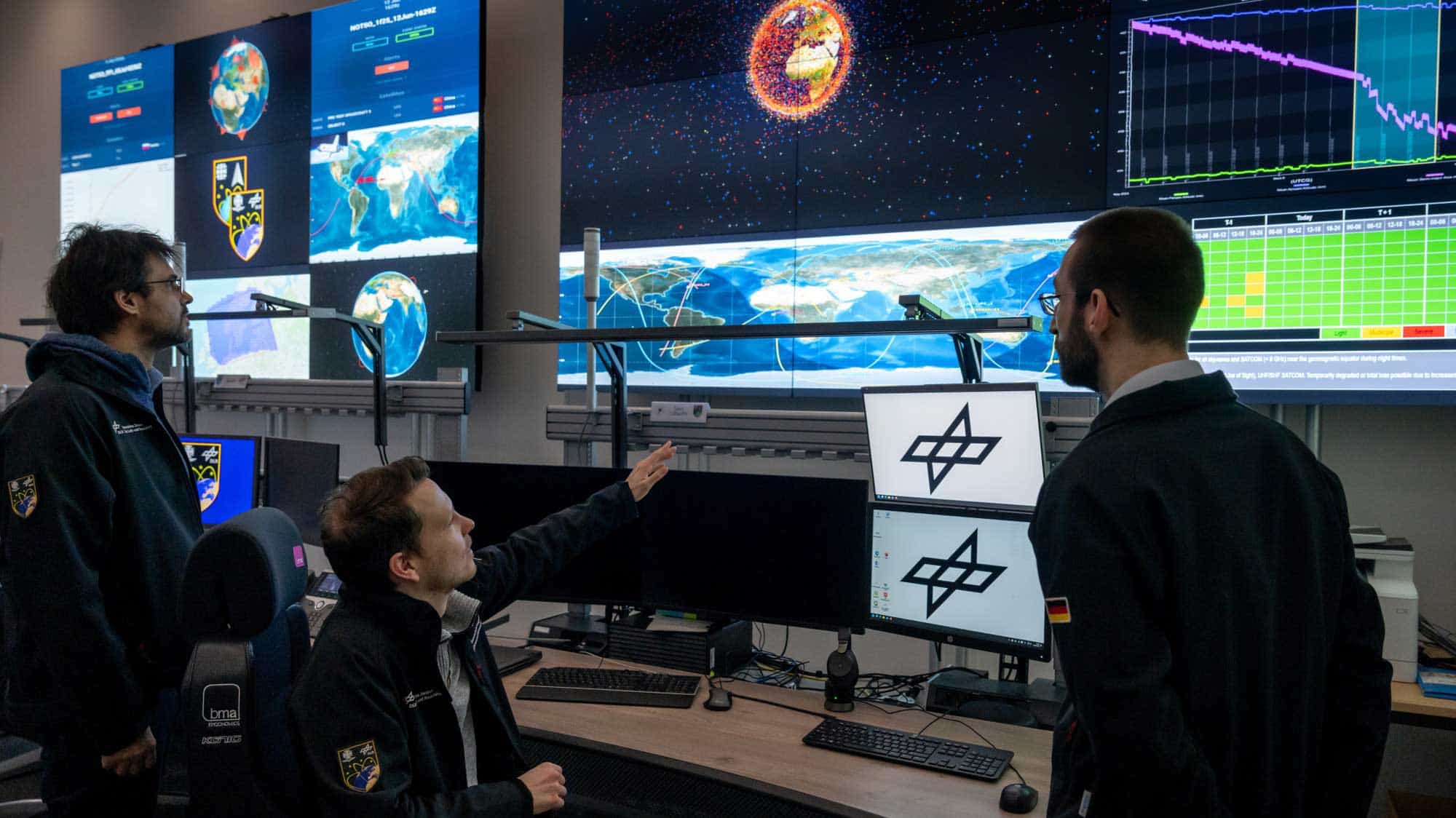 Safety in orbit: DLR & Bundeswehr use Uedem Space Situational Awareness Center (Safety in orbit: DLR & Bundeswehr use Uedem Space Situational Awareness Center)
Safety in orbit: DLR & Bundeswehr use Uedem Space Situational Awareness Center (Safety in orbit: DLR & Bundeswehr use Uedem Space Situational Awareness Center)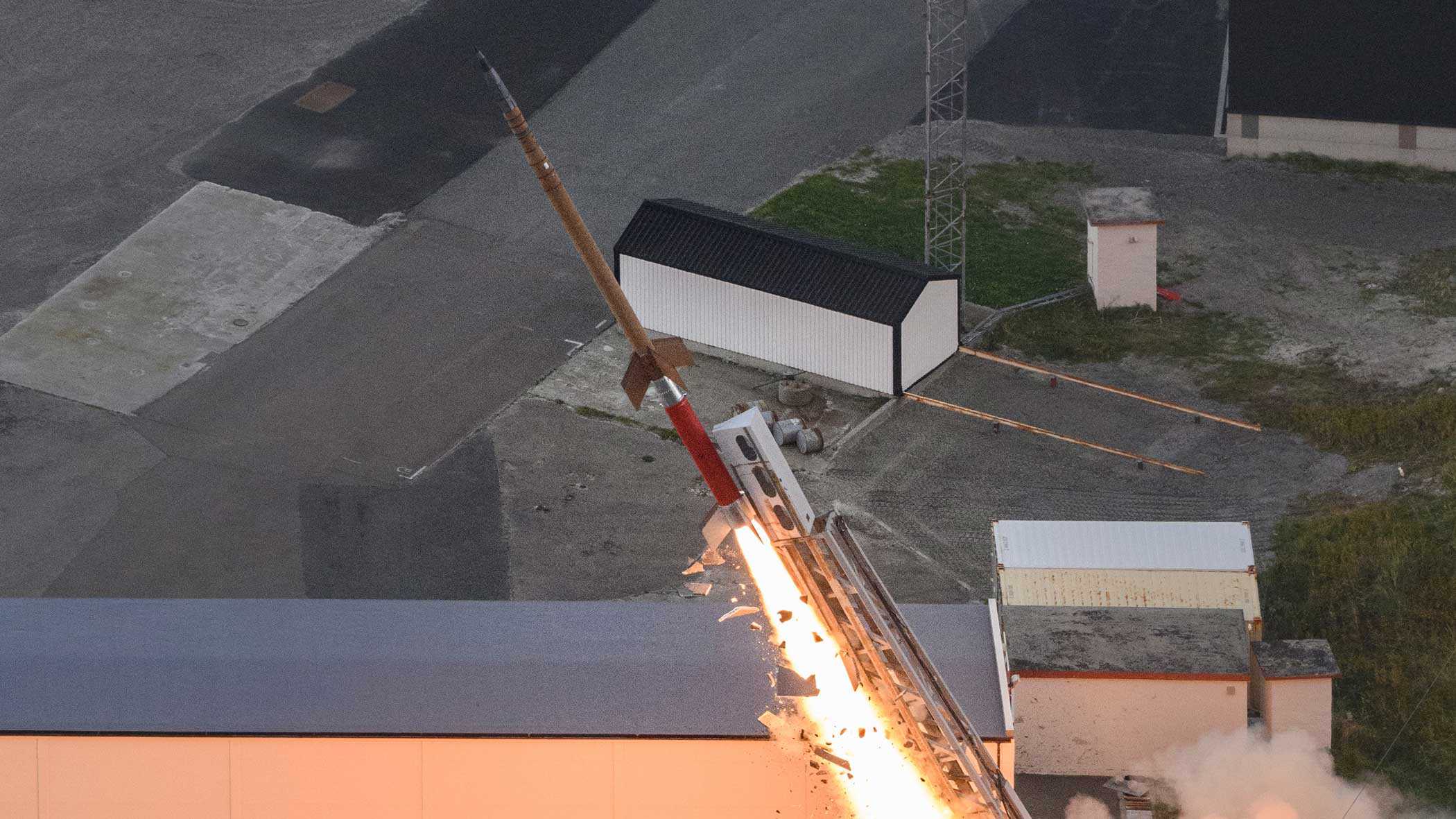 Reusable spacecraft: DLR’s ATHEAt flight experiment (Reusable spacecraft: DLR’s ATHEAt flight experiment)
Reusable spacecraft: DLR’s ATHEAt flight experiment (Reusable spacecraft: DLR’s ATHEAt flight experiment)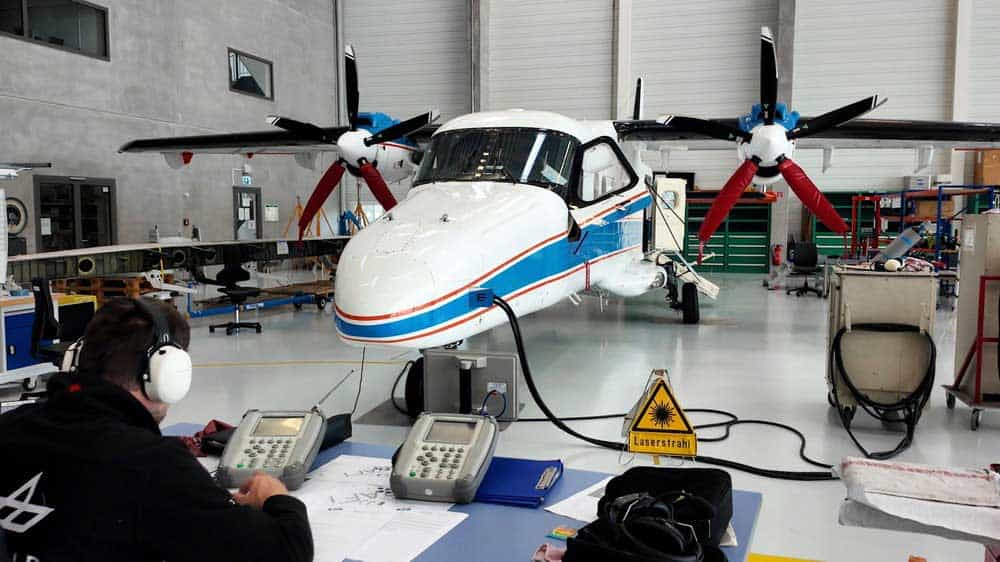 Quantum communication: From aircraft to ground stations and the quantum internet (Quantum communication: From aircraft to ground stations and the quantum internet)
Quantum communication: From aircraft to ground stations and the quantum internet (Quantum communication: From aircraft to ground stations and the quantum internet)
